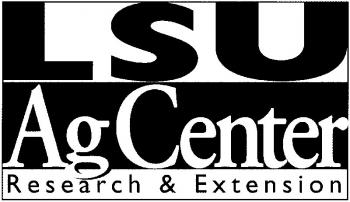
AgCenter: Know your hardiness, heat zones
HAMMOND — As we transition from late winter to early spring in the landscape, many gardeners start thinking about weather conditions, last frost and freeze dates and consider whether it’s safe to plant this plant or that plant in the landscape.
Even now in March, a frost or a freeze could still happen. Realize that a last-freeze date may be different than a last-frost date. The difference can be as much as six weeks between dates for the average last freeze and the last frost as you go from warmer areas of Louisiana to cooler areas of the state.
You can check with your parish AgCenter agent for the average frost and freeze dates for your area in Louisiana and watch the 10- and 15-day extended weather forecasts prior to planting frost-sensitive plants in late winter and early spring.
We had several colder-than-normal days this winter. This has probably caused some damage to a few landscape plants. Bark split on azaleas is common after this kind of winter. Normally we won’t notice cold damage to landscape plants until a month or two after new spring growth commences.
Chilling hours have been slightly above normal statewide this year. We have had adequate cold weather for our fruit trees to flower and leaf out on time this spring, and most horticulturists around the state are reporting average blooming times for late winter and early spring.
Choosing hardy plants that can reliably survive winter cold is important to a successful landscape. Plants need to have the ability to tolerate our cold growing conditions in winter and our hot growing conditions in summer. For best results, select plants that are recommended for U.S. Department of Agriculture hardiness zones 8 and 9 and for American Horticulture Society heat zones 8 and 9.
Louisiana is in USDA hardiness zones 8 and 9. These hardiness zones indicate the average minimum temperature that occurs during the winter in different geographical regions. Average minimum temperatures are 10 to 20 degrees in hardiness zone 8 and 20 to 30 degrees in hardiness zone 9.
A good guideline to determine the difference between hardiness zone 8 and 9 is temperatures in the teens in winter. If you regularly have temperatures in the teens, you’re in zone 8 while low temperatures usually in the 20s indicate zone 9.
For a plant example, crape myrtles are classified as hardy in zones 7 to 9, which indicates they will do fine across all of Louisiana but may see some cold damage in northern Arkansas, Tennessee or Oklahoma where hardiness zone 6 starts. Since the hardiness zone map was first published in 1960, experts have recommended plants for different areas of the country based on these zones.
The American Horticulture Society’s heat zones are based on the average number of days per year the temperature reaches 86 degrees or higher. Heat zone 8 has 91-120 days above 86 degrees in a calendar year, while heat zone 9 has 120-150 days of 86 degrees or higher. Cellular structures in plants, enzymes and plant metabolism do not work as well in plants as weather gets hotter.
Environmental conditions other than temperature should also influence your selection of plant material for a home landscape. The size of the planting area is important, as are other site characteristics, such as sun or shade exposure, wet or dry locations and exposure to windy conditions.
Louisiana’s 50 to 60 inches of annual rainfall are also important to consider when selecting landscape plants. We can grow plants that like drier conditions better in the drier climate of Shreveport than in the wetter climate of New Orleans.
We need to be aware of the temperature and climate considerations that can influence our decision making in our landscapes. Select the right plants for your part of the state.
You can see more about work being done in landscape horticulture by visiting the LSU AgCenter Hammond Research Station website at www.lsuagcenter.com/hammond.
--By ALLEN OWINGS
LSU AgCenter horticulturist
- Log in to post comments
